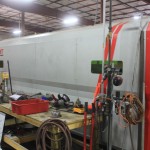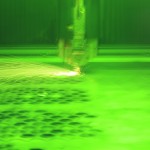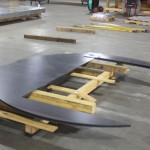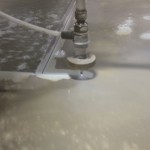Jeremy Ratliff
Reporter
In light of all the recent buzz about TID (Tax Increment District) adjustments, changes and potential benefits, one local business is living proof of such benefits.
During a regular meeting last July, the Common Council unanimously approved an RDA (Redevelopment Authority) recommendation for an agreement between the city and Merrill Tool & Water Jet LLC (MTW).
During the RDA’s meeting last June, a recommendation was made for a $25,000 TIF development incentive related to building improvements at MTW, such as electric and a high pressure gas system. These improvements were required for MTW to successfully implement an estimated million-dollar capital equipment investment with the goal of installing and supporting a fiber-optic laser.
The expansion was estimated to not only extend the business’s market reach capability but also create three new jobs, in addition to the 21 employees the company already had.
At the RDA meeting, Susan Ryman – then from the Lincoln County Economic Development Corporation – advised the city’s Community Development Committee approved a $200,000 low interest loan from the Central Wisconsin Economic Development fund, due to the project financing gap.
A little over a year later, the expansion is not only complete but according to MTW managing partner Lee Opsahl, each of the projected goals of the expansion has been met.
The company has surpassed its goal of creating three jobs by adding five, including an operator positions for the new “cutting edge” technology.
In addition, MTW has effectively seized an opportunity to expand customer base and serve existing customers better.
“By adding the laser, we are now more cost competitive than we were prior with water jets alone,” Opsahl explains. “We are also a full service machine shop. The laser has also benefited our machine shop by providing a low cost cutting solution for our fabrication and welding projects.”
Although the road to the company’s technological advancement officially began last summer, the concept had been on Opsahl’s radar long beforehand.
“The idea had been in the back of my mind since the spring of 2012,” he adds. “I was interested in finding a lower cost cutting solution for steel and I found the answer in this fiber optic laser. Then last February (2014), I felt we were in position to undertake the capital expansion.”
Following city approval, the company immediately set about making the necessary infrastructure upgrades for the expansion to come to fruition.
Included in the upgrades were mini nitrogen gas bulk systems consisting of individual 1,500-2,000 liter nitrogen tanks. Getting the high pressure (450psi), pure nitrogen (99.996% purity) to the laser required a special gas line to be installed. The mini-bulk systems have since been replaced with a larger, more efficient 3,000-gallon system.
“The laser uses nitrogen when cutting stainless steel and aluminum,” Opsahl explains. “Using the nitrogen gas helps prevent oxidization which makes a cleaner cut.”
Other infrastructure improvements included an extensive electrical system upgrade to power the laser and its components, as well as an A-frame track system with a 1-ton electrical hoist and vacuum system, for material handling.
Opsahl estimates the total price tag for the infrastructure improvements alone was approximately $80,000, $25,000 of which was funded by the TIF incentive.
Following completion in August, the device components arrived via flat-bed semi from Salt Lake City, UT and rung in at an approximate price of $960,000, which also included a press break to form the laser cut parts.
Within five days, the new fiber-optic laser was up and running.
During a plant tour last week, Opsahl showcased the efficiency of the laser compared to the company’s other cutting option; high pressure water jets.
“If we had cut this with a water jet, it would have taken up about an hour and a half.” Opsahl explained, indicating a recently cut side-panel part measuring 78×75 inches and consisting of 3/8-inch steel. “By using the laser, we were able to finish this order in just 15 minutes.”
In fact, the laser, cutting at 60 inches per minute is nearly seven times faster than the water jet’s nine inches per minute.
Currently, MTW receives and fills orders for customers as large as Kraft Foods Inc. and serves local customers such as Marathon Electric and A&B Processing Systems of Stratford. Opsahl indicates the company has expanded its services and products to the East Coast, Texas, California, and Canada and hopes to take on other international customers in the future.
Although the fiber-optic laser has certainly benefitted the company, Opsahl is quick to point out the benefits come at a price.
“We have certainly grown our sales revenue but our material inventory costs have increased dramatically. It’s a beast, but a hungry beast,” he adds with a chuckle. “We have to maintain our inventory of steel, aluminum or whatever projects call for. Those sorts of materials aren’t cheap. The laser is certainly paying for itself but we aren’t really seeing any profit yet. That’s part of the growing process though. We are still in the early stages.
“But as customer base and projects grow, we will see more of a profit,” he added. “As that happens, we hope to create a second and third shift. In the manufacturing world, it’s generally understood you break even during the day and make money at night.”
If MTW is able to meet such goals, it could mean as many as 12 additional jobs.
“The laser has definitely opened a lot of doors for us and we expect to open many more in the future,” Opsahl said.




